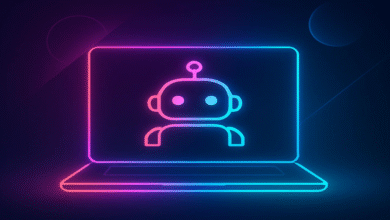Navigating the Digital Landscape A Closer Look at the Digital SAT

The world of standardized testing is undergoing a seismic shift as we transition from paper-based formats to more advanced digital platforms. One such transformation making waves in the education sector is the Digital SAT, a revamped version of the traditional SAT that aligns with today’s tech-driven world. The introduction of the Digital SAT isn’t just about shifting from paper to screen; it reflects a deeper change in how we assess students’ readiness for college. But what does this mean for test-takers, and how does it affect their preparation?
The Evolution of the SAT: Why Digital?
For decades, the SAT has been a cornerstone of college admissions, helping institutions evaluate students’ academic capabilities. However, the traditional format had its limitations. Paper exams, while reliable for a time, don’t match the pace of today’s digital-first world. They’re time-consuming to grade, susceptible to loss or damage, and often create logistical challenges, especially for international students.
Enter the Digital SAT, a solution designed to address these issues while providing a more secure, adaptable, and user-friendly exam experience. With the digital format, not only are administrative challenges reduced, but students also benefit from a modern test environment that mimics their everyday interactions with technology.
The move towards a digital platform reflects a broader shift in education, where learning is increasingly done online, and assessments must adapt to fit this new landscape. But how exactly does the Digital SAT test differ from the paper version?
What Makes the Digital SAT Different?
One of the most significant innovations in the Digital SAT is the introduction of adaptive testing. This means that the difficulty of the test adjusts based on the student’s performance. Answer a question correctly, and you’ll be presented with a more challenging one. Struggle with a concept? The next question may be slightly easier to ensure the test aligns more closely with your abilities.
This personalized approach is a departure from the static nature of the paper SAT, where every student faces the same set of questions. Adaptive testing allows for a more nuanced assessment of a student’s strengths and weaknesses, creating a test experience that’s unique to each individual.
Moreover, the Digital SAT test introduces practical improvements in the testing experience. Students can now benefit from features such as on-screen calculators, the ability to flag questions for review, and real-time timers that make managing the test much more intuitive. These tools not only reduce stress but also streamline the process, allowing students to focus on what truly matters: demonstrating their knowledge and skills.
The Role of AI in the Digital SAT Preparation
As the Digital SAT test becomes more widely adopted, students need to adapt their study strategies to align with the new format. This is where artificial intelligence (AI) plays a pivotal role. AI-powered learning platforms like LearnQ.ai have emerged as essential resources for students preparing for the Digital SAT.
With thousands of practice questions, full-length digital SAT practice exams, and real-time analytics, AI-based platforms are transforming how students prepare for the test. Unlike traditional study methods that rely on static materials like textbooks or practice sheets, AI-driven platforms adapt to a student’s performance over time. They provide personalized feedback, pinpoint weak areas, and recommend targeted exercises to improve scores.
These platforms also leverage AI tutors, such as Mia, available 24/7 to help students resolve doubts and explain complex concepts. Such tools are crucial in preparing for the Digital SAT as they offer real-time support and personalized guidance tailored to each student’s unique needs.
Gamifying the Learning Process
Another standout feature of digital platforms that cater to the Digital SAT test is the gamification of learning. Preparing for standardized tests can be overwhelming, but digital tools make it more engaging by integrating game-based learning modules. These mobile-friendly, interactive tests are not just for fun; they actively contribute to skill-building in a way that feels less like studying and more like an enjoyable challenge.
By incorporating elements such as rewards, competition, and progress tracking, students are motivated to engage with the content more frequently. This type of learning is particularly beneficial for students who may struggle with traditional study methods or find it difficult to stay focused during long periods of preparation.
Gamification also helps with retention. As students repeatedly engage with practice questions, their understanding deepens, and they are more likely to retain information over time. This method of learning has proven to be incredibly effective in boosting both engagement and scores.
Security and Fairness in Testing
One of the longstanding challenges with paper-based standardized tests has been ensuring security and fairness. Over the years, there have been numerous reports of test booklets being lost or tampered with, leading to discrepancies in scoring or the need for students to retake exams. Additionally, the paper format made it easier for students to engage in dishonest practices, such as sharing answers.
The Digital SAT test resolves many of these issues. Since the test is administered online, it minimizes the risk of lost exams and reduces opportunities for cheating. Each student’s test is unique, thanks to the adaptive nature of the exam, making it nearly impossible for students to share answers or gain an unfair advantage.
Furthermore, the digital format allows for more efficient test scoring. With automated systems in place, scores are processed more quickly, and the risk of human error in grading is significantly reduced. This ensures that results are not only more accurate but also delivered to students in a timely manner, allowing them to focus on the next steps in their academic journey.
Preparing for the Digital SAT: A New Mindset
Preparing for the Digital SAT test requires a shift in mindset. While the fundamentals of the SAT remain unchanged – students still need to demonstrate their abilities in reading, writing, and math – the tools and strategies they use to prepare have evolved. Gone are the days of memorizing answers from study books. Instead, students must focus on engaging with adaptive learning tools that provide real-time feedback and practice under digital testing conditions.
AI-powered platforms are leading the charge in helping students build these skills. By offering personalized study plans, diagnostic tests, and tailored practice exercises, these platforms provide a more efficient and effective way to prepare. Students are no longer left guessing about where they need to improve; they have the tools to monitor their progress, receive guidance, and make adjustments as needed.
Additionally, practicing under timed conditions with full-length digital mock exams ensures that students are ready for the pacing of the actual Digital SAT test. They become familiar with the digital interface, reducing test-day anxiety and giving them the confidence needed to succeed.
Global Accessibility and Flexibility
One of the most significant advantages of the Digital SAT test is its global accessibility. For international students, the logistical challenges of taking a paper-based SAT were often overwhelming. Long travel distances to testing centers, the possibility of errors in score reporting, and delays in receiving results were common issues.
The digital format eliminates these barriers by making the SAT more accessible to students around the world. With the online format, students can take the test in their own country without the need for excessive travel. Additionally, digital scores are processed faster, ensuring students receive their results promptly and can move forward with their college applications without unnecessary delays.
This accessibility extends beyond geography. The digital SAT is more flexible in accommodating different learning styles and needs. The adaptive nature of the test ensures that students with varying academic strengths are assessed more fairly, providing a better reflection of their true abilities.
Conclusion: The Future of Testing is Digital
The Digital SAT test represents more than just a technological upgrade; it signals a transformation in how we think about standardized testing. By leveraging adaptive testing, AI-driven preparation tools, and enhanced security measures, the Digital SAT offers a more personalized, efficient, and fair testing experience for students worldwide.
As more students embrace this new format, they can take advantage of advanced preparation tools, gamified learning experiences, and AI-powered insights that make the entire process more intuitive and tailored to their needs. The future of standardized testing is here, and the Digital SAT test is leading the way.



